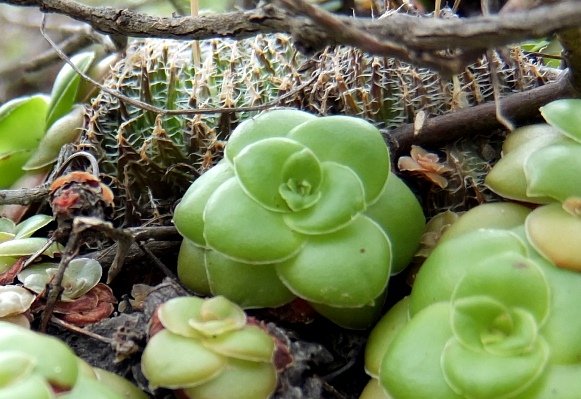Crassula orbicularis, not all new rosettes thriving

No Crassula orbicularis flowers here at the moment, but this plant or plants is or are doing its or their best to produce offspring by stolon. Clearly successful in growing them, although the small, attached “arm’s length” rosettes are still sickly yellow or red and shrivelling, compared to the well-fed, rooted plants that launched them. But give the newcomers time!
The secondary rosettes have the same genetic make-up as their parent plants, unlike seed-derived plants not stuck on stolons that share genetic endowment equally with both parent plants. Seed plants are genetically unique, while vegetatively produced ones are clones.
These crassulas have Haworthia arachnoides for neighbours. The two species are too dramatically different for motherly love to cross the divide. But plants don’t do xenophobia (Smith, et al, 2017; Vlok and Schutte-Vlok, 2015).

